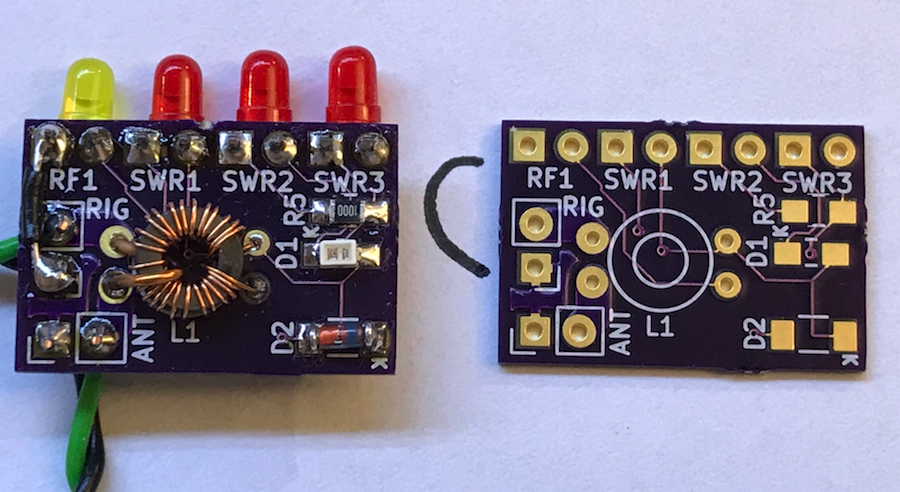Hello,
today I got a little extra time and I finally soldered all pending leds.
I missed the yellow led and I finally assembled all 4 leds the same: they are red color, Mouser ref. 604-WP710A10LSRD.
Their forward voltage is 1,65V, current 2mA, and are 25 mcd luminous intensity.
According to your comments, I had to swap my connectors, so ANT was used for RIG, and the RIG in the PCB was used for the Antenna.
So far I did an initial test with this setup:
- Rig: MTR-3B
- Antenna Dummy load: resistor 50 and 100 ohm (SWR 1:1, and 2:1)
First I powered the rig with a 2S Lipo (7,5 Volt), I guess around 2 watt out. I put the 50 ohm load. Key down and the first led light up, all right!
Then switched to 100 ohm and then 3 leds light, being the first the brighter.
I played a bit with the inbuilt potentiometer and got only 2 working, as expected. The second one with little bright. The potentiometer is near its middle position.
I replaced the battery and put a 3S lipo (12V - 5w out). With the same 100 ohm load again 3 leds went on. I adjusted the potentiometer and got only 2 leds working as expected.
REMARK: it is important to isolate every led because the light of every led travels around and it seems the others are lighting!! I used pieces of paper between them for the testing.
Once the PCB is inside a box every led will pass on its own hole, being then well isolated…
PENDING TEST:
I need to repeat the test with some more resistors to fine tune the SWR reading.
Power level is important and affects the brightness and number of leds lightning, therefore I will adjust with 5w that is the normal level I will use with the rig.
Note the clothes peg used to join the 2 resistors of 50 ohm together. I’m running off crocodriles!!
The project is working well. Wishing to have it ready to operate in the box, I’ll let you know more soon.
73 de Ignacio



